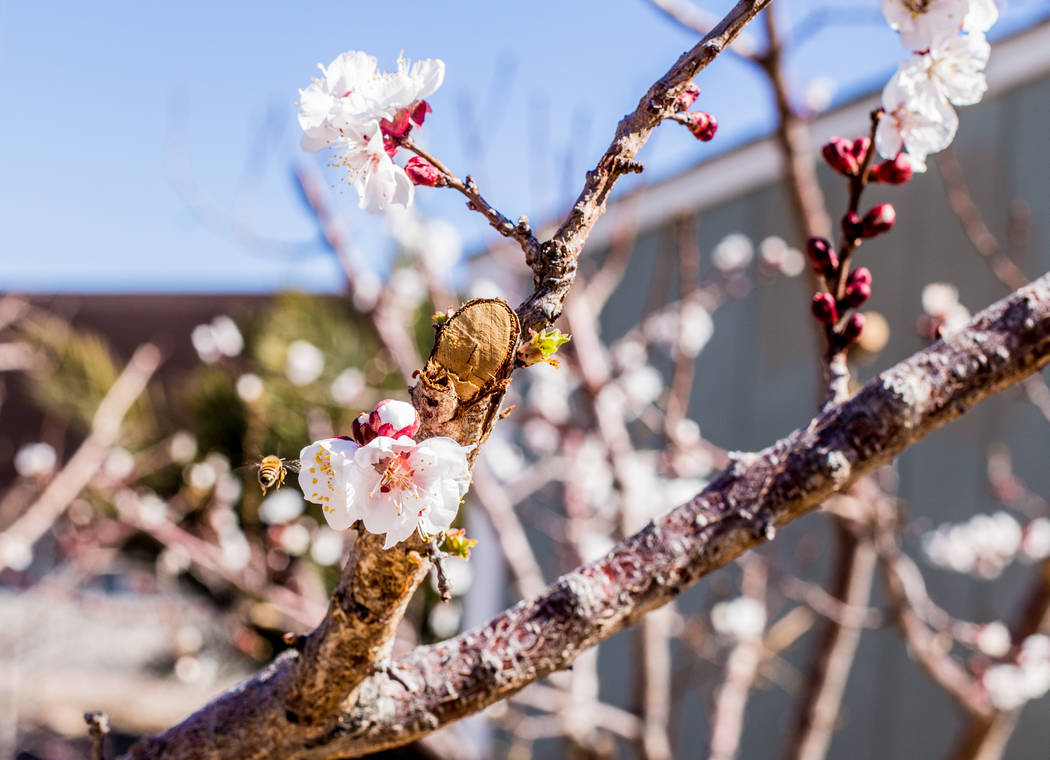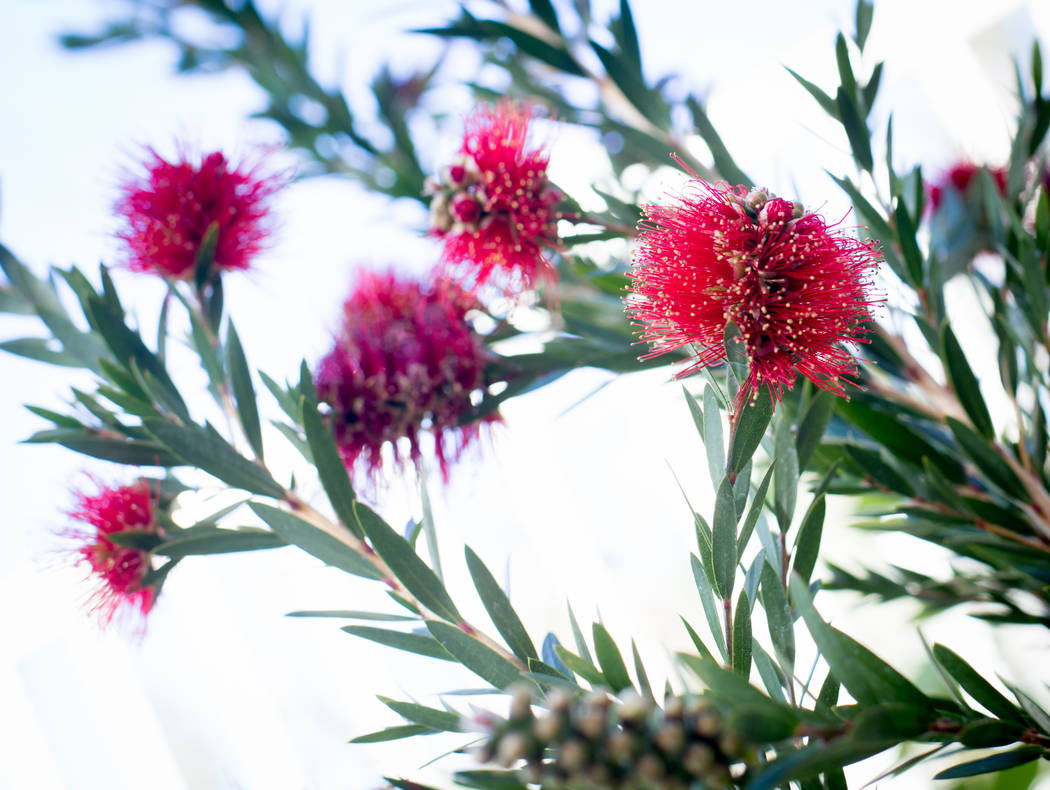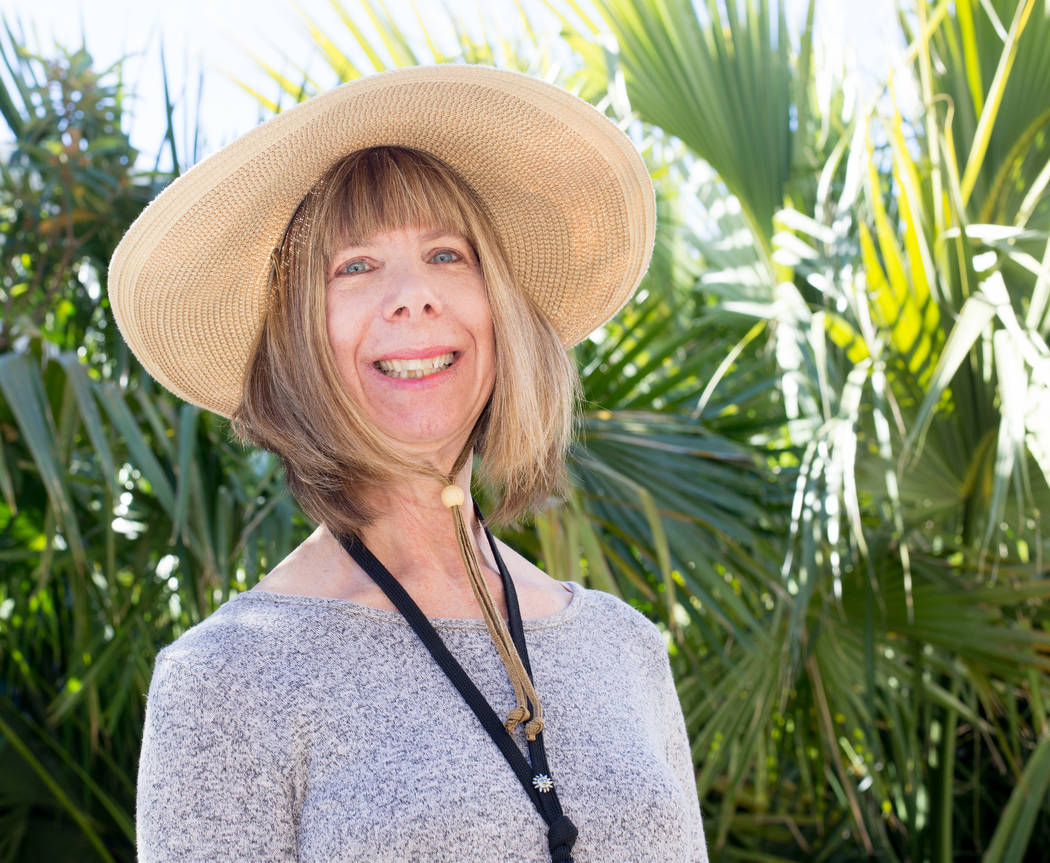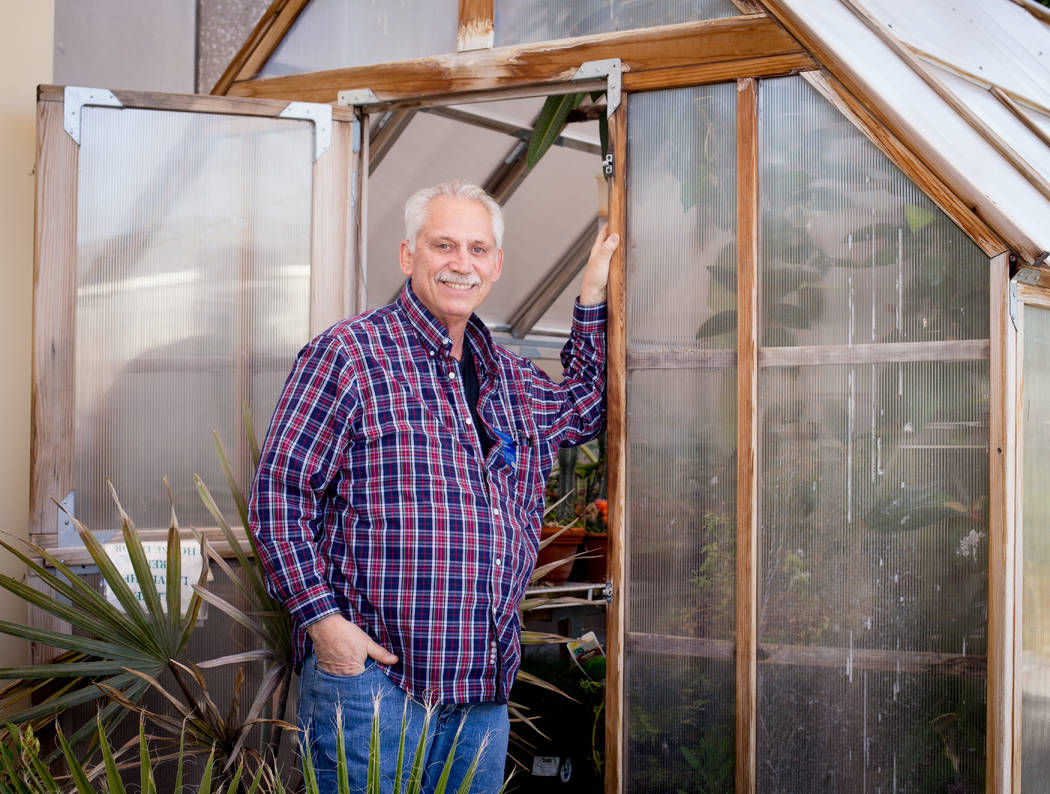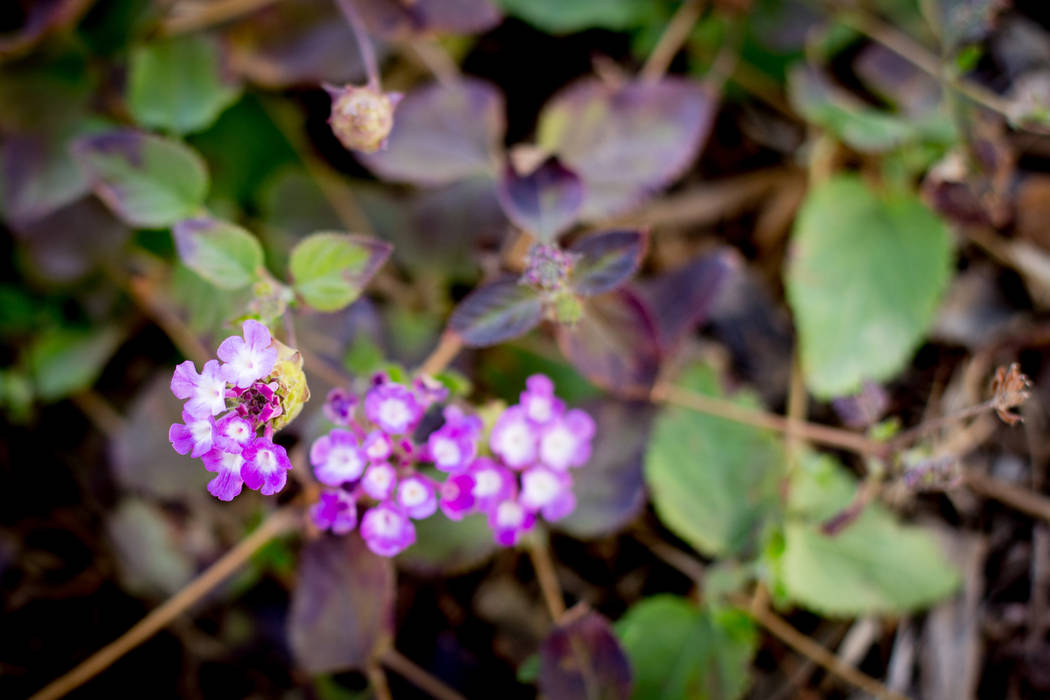Cooperative Extension’s master gardeners offer expert advice
With temperatures in the 80s, many local residents are already hard at work in their gardens and yards. Southern Nevada’s temperature extremes, scarcity of water and desert soils combine for a harsh growing climate.
While some people believe they understand our unique desert climate and prefer to tackle these duties without any advice, other home gardeners are thirsty for information.
That’s where the University of Nevada Cooperative Extension’s master gardeners come in. Part of the social horticulture programming of Cooperative Extension, master gardeners are wonderful resources who will celebrate 25 years of volunteer service to the community this year.
Master Gardener and “Plant Whisperer” (as he was affectionately dubbed by a third-grader) Howard Galin started his lifelong love of gardening as a 10-year-old in New York.
“I’ve always loved working with and learning about plants,” he said. “I worked for years as a New York school administrator, and during my summers off, my wife and I would drive our children out West. The desert landscaping fascinated my wife, and each year I would bring back plant samples from our travels. Of course, I had to bring them inside during the harsh East Coast winters, but I learned how to work with them and keep them alive.”
Galin enjoys speaking to various community groups about the desert environment and its landscapes.
“When I am out in the community, one of the most common inquiries I receive is about the timing of getting lawns ready for spring and summer,” he said.
According to Galin, many transplants to Southern Nevada are used to doing these activities in March and April, but soil preparation and planting really should be started much earlier here — like in February.
“Things are already budding by the second week of February and that’s when you need to prepare for the growing season,” he said.
Amy Zeldenrust, another master gardener, learned of the program in 2003 after relocating from Ohio and promptly killing “thousands of dollars in plants.” She reached out to the group for advice and, shortly after, decided to go for the designation herself.
“I believe this is the harshest landscape there is,” she said. “It’s honestly the most difficult to grow in because of the extreme differences in temperature. I knew I had to learn about it if I wanted to be successful growing in it.”
For both of these individuals, becoming master gardeners was a natural fit. Through a training program held during the fall, Cooperative Extension staff, state extension specialists and local gardening professionals teach an 80-hour series of classes that train volunteers in research-based home horticulture practices.
Interested individuals attend four-hour classes three days a week, which consist of three hours of lecture and a one-hour “hands-on” landscape laboratory. A fee is charged to offset the program’s operating expenses. When volunteers complete the training, they sign a contract to volunteer community service time through University of Nevada Cooperative Extension.
“In essence, these people agree that in return for the training they receive, they will volunteer at least 50 hours yearly back to Cooperative Extension,” Ann Edmunds, Master Gardeners Program coordinator.
Upon completion of the training, individuals meet with the program coordinator to discuss their talents and the needs of Cooperative Extension to place them in a position that will best utilize their knowledge and skills. After training requirements and the first year’s 50 volunteer hours are fulfilled, they are officially certified as master gardeners.
“This title belongs to Cooperative Extension and may only be used in Cooperative Extension activities,” Edmunds said. “Although volunteering for the Master Gardener Program is great horticultural experience, it may not be credited to personal enterprises.”
In order to hold onto their designation, master gardeners must volunteer at least 50 hours annually on approved projects.
According to Zeldenrust, the most common question she hears from community members deals with water. “‘How much should I be watering?’ they always ask. That’s a really hard question to answer because there are so many factors! It depends on your soil, the plant type, and the season— the list goes on and on. I will say that the overwatering of plants is the most common cause of their death,” she said.
What’s her advice to those preparing for the warm outdoor months?
“As the weather warms up, things that were killed off during the winter need to be trimmed to allow for new growth.” Zeldenrust explained that while many people will trim such plants, they don’t usually cut off enough so the new growth can come through.
“One of the most common mistakes I see is when grass plants are carved into round balls, because the new grasses just struggle to grow up through all that dead material. These really need to be cut to the ground as close as possible.”
And while everyone lusts for those beautiful spring flowers when the weather starts getting warm, Zeldenrust said, “Nurseries tend to sell things when they are blooming. People need to go out and shop every season so they can get more of a selection of flowers and colors and keep the blooms going.”
Galin believes that residents can basically grow anything (except cherries, which need a period in frozen ground) in Southern Nevada if the necessary time is given and the effort is well-executed. However, he cautioned that Southern Nevada soil has high alkalinity.
“If you take soil samples from various locations around the valley, you would see that they’re all very different,” he said. “Developers of many new communities that are popping up everywhere get their soil from different places and there’s no consistency.”
To deal with this issue, Galin recommends a number of steps to prepare soil for planting:
n Put down sulfur where you want to plant as it will bring down the soil’s pH level.
n Prepare for the inevitable by purchasing systemic insecticide and putting it into the soil of nonedible plants so it can attack harmful larvae right as they hatch.
n Depending on your plants’ needs, Galin stresses the importance of using the correct type of fertilizer. Keep in mind what the three numbers listed on fertilizer labels signify: 1. Nitrogen helps plants grow green and leafy; 2. Phosphorous helps fruit and flowers grow; and 3. Potassium strengthens plant roots.
He also mentions that for those who enjoy growing roses, a low-cost fertilizer is Epsom salts.
“You can buy it relatively cheap,” Galin said. He often jokes with community groups about the benefits of “dumping it in your roses after you’re done soaking your feet in it.”
A free community resource with helpful advice related to lawn and plant care, the Master Gardener Help Line is 702-257-5555. In 2016, Southern Nevada master gardeners had a busy year, assisting 31,097 people. In addition, master gardeners volunteered 35,268 hours on community projects.
If you are interested in checking out their work and learning more, the Cooperative Extension’s Demonstration Gardens are located at 8050 Paradise Road and are open to the public Monday through Friday from 8 a.m. to 5 p.m. Free guided tours are offered Fridays at 10 a.m.
In addition, master gardeners offer free monthly tours during the spring. On April 8, master gardeners will discuss April flowers and, on May 20, it’s “Hot Summer Colors.” Tours start at 10 a.m.
In North Las Vegas, the Cooperative Extension’s Research Center and Demonstration Orchard is at 4600 Horse Road and is open to visitors Tuesday, Thursday and Saturdays from 7 a.m. until noon.



